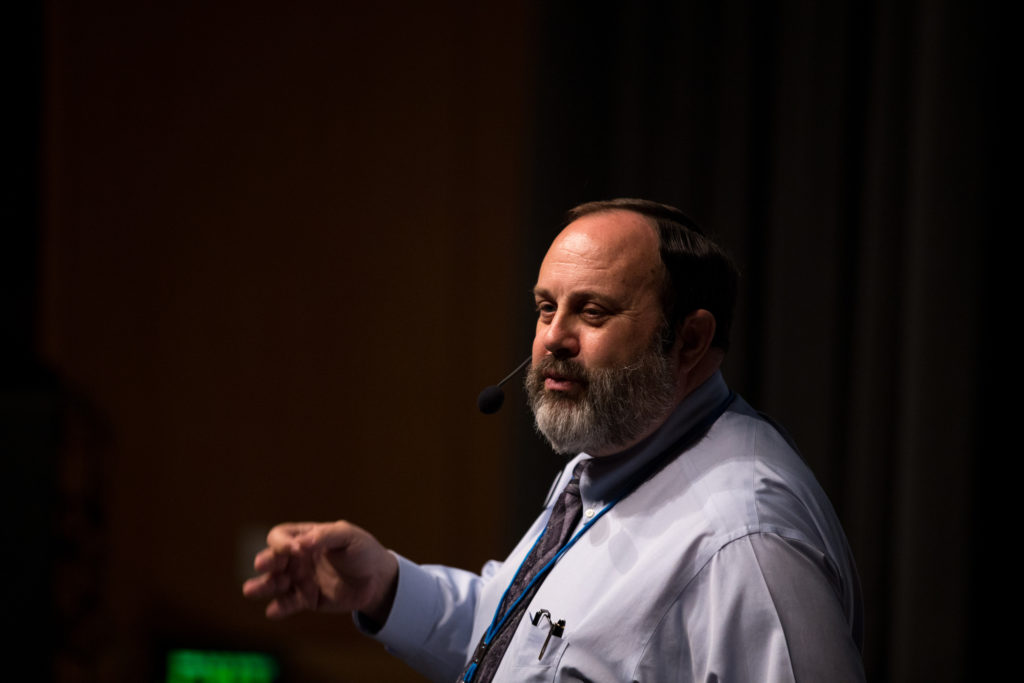April 18, 2015 | Keynote, Mobile Journalism
Screens, not physical media, dominate culture, Robert Picard tells ISOJ audience
Screens have replaced physical media as the “primary technologies for media content and communication,” said Robert Picard, with the Reuters Institute at the University of Oxford, during his keynote address at the International Symposium on Online Journalism (ISOJ) on Saturday, April 18.
Picard, whose presentation focused on contemporary media trends and rethinking company strategies, said this domination of screens, big and small, is changing how people perceive and interact with information.
Additionally, mobile devices are the “dominant means for interpersonal and media communication,” he said. Social media also has impacted interpersonal communication.
“With the development of social media, we are now combining mass communication and interpersonal communications in ways that we’ve never been able to do so historically. And we’re not sure all of the implications of that or how to actually best use them,” Picard said.

People are consuming media in more individualized ways and news organizations need to provide interactivity – sharing and commenting – in order to meet expectations, according to Picard.
Other problems he identified are that Internet-based connections are replacing existing media platforms. We also have an overabundance of information and that information is losing its value. Further, news organizations need to figure out how to “connect audiences with content.”
Picard urged attendees to realize the differences between news consumption and other digital consumption, as well as the limited potential of digital news.
Paid consumption of news is slowing in most places. “Paid revenue is primarily growing through increased product offerings to existing customers,” and news organizations aren’t benefiting in big ways from growing digital and mobile advertising, Picard said.
“It is going to be impossible for digital news provision to be the savior of legacy news organizations,” said Picard. “Digital can support news in a digital environment, but it cannot support digital plus print.”
Picard said that VUCA (volatile, uncertain, complex, ambiguous) environments are posing problems for media firms. These environments have unclear industry boundaries, corporate structures that are in flux, and experience “rapid changes in sources of competitive advantage.”
He offered a few ways that organizations could try to fix these situations. The primary strategic objectives should be to stabilize consumption and revenue.
“We are still preparing news as if it was the 19th century,” Picard said.
Some newsrooms are developing research and development teams and Picard said they should not be dissuaded by failure. Maybe some newsrooms cannot hire a full department, but he suggested maybe then can hire a couple people to meet the digital challenge.
News organizations need to figure out what makes their content unique.
Picard asked, “What is it about your content that is different from everybody else’s?”
People will pay for things like uniqueness, locality, and specialization, he said.
The 16th annual ISOJ was held April 17-18 at the Blanton Museum of Art on the campus of the University of Texas at Austin.
ISOJ 2015: Robert Picard, from Knight Center on Vimeo.

